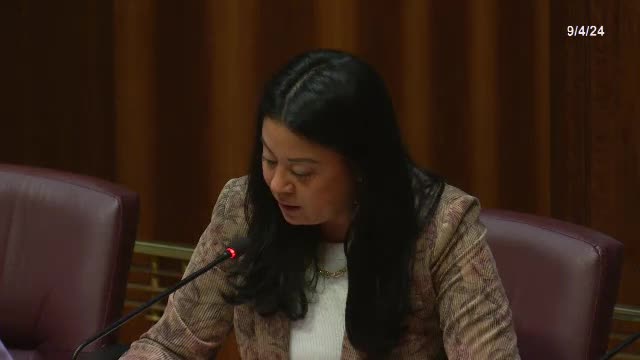City leaders push for action on vacant properties crisis
September 04, 2024 | St. Paul City, Ramsey County, Minnesota
This article was created by AI summarizing key points discussed. AI makes mistakes, so for full details and context, please refer to the video of the full meeting. Please report any errors so we can fix them. Report an error »

During a recent government meeting, city officials discussed strategies to combat the growing issue of vacant properties and storefronts in local business corridors. The conversation highlighted the need for a comprehensive approach to address disinvestment and promote local ownership.
Council members emphasized the importance of mapping property ownership, particularly in areas like Grand Avenue and University Avenue, where out-of-state investors and speculative real estate interests have left many properties unactivated. One council member proposed updating the vacant building fee schedule to differentiate between larger commercial properties and residential ones, suggesting that a structural analysis of ownership concentration could lead to more effective solutions.
The Office of Financial Empowerment (OFE) was recognized for its initiative to support cooperative ownership models, which aim to empower local workers and communities to take control of their businesses and properties. Examples of grassroots organizations, such as the Taproot Investment Cooperative and Hamlin Midway Investment Cooperative, were cited as successful models for community-led real estate investment.
Commissioner Gelelli echoed the sentiment that controlling land is crucial to preventing displacement and highlighted the collaborative efforts among various city departments to address these challenges. The discussion also touched on the need for funding opportunities and the importance of leveraging resources from organizations like the Groundbreak Coalition.
In response to concerns about the prevalence of empty storefronts, officials acknowledged the complexities involved, particularly with privately owned properties. They discussed the necessity of creating meaningful incentives or penalties to discourage property owners from leaving buildings vacant. While no comprehensive list of tools was available yet, city officials assured that they were actively exploring legislative changes and support mechanisms to revitalize business corridors.
The meeting underscored a collective commitment to tackling the issue of vacant properties, with a focus on fostering local ownership and community engagement as key strategies for revitalization.
Council members emphasized the importance of mapping property ownership, particularly in areas like Grand Avenue and University Avenue, where out-of-state investors and speculative real estate interests have left many properties unactivated. One council member proposed updating the vacant building fee schedule to differentiate between larger commercial properties and residential ones, suggesting that a structural analysis of ownership concentration could lead to more effective solutions.
The Office of Financial Empowerment (OFE) was recognized for its initiative to support cooperative ownership models, which aim to empower local workers and communities to take control of their businesses and properties. Examples of grassroots organizations, such as the Taproot Investment Cooperative and Hamlin Midway Investment Cooperative, were cited as successful models for community-led real estate investment.
Commissioner Gelelli echoed the sentiment that controlling land is crucial to preventing displacement and highlighted the collaborative efforts among various city departments to address these challenges. The discussion also touched on the need for funding opportunities and the importance of leveraging resources from organizations like the Groundbreak Coalition.
In response to concerns about the prevalence of empty storefronts, officials acknowledged the complexities involved, particularly with privately owned properties. They discussed the necessity of creating meaningful incentives or penalties to discourage property owners from leaving buildings vacant. While no comprehensive list of tools was available yet, city officials assured that they were actively exploring legislative changes and support mechanisms to revitalize business corridors.
The meeting underscored a collective commitment to tackling the issue of vacant properties, with a focus on fostering local ownership and community engagement as key strategies for revitalization.
View full meeting
This article is based on a recent meeting—watch the full video and explore the complete transcript for deeper insights into the discussion.
View full meeting
